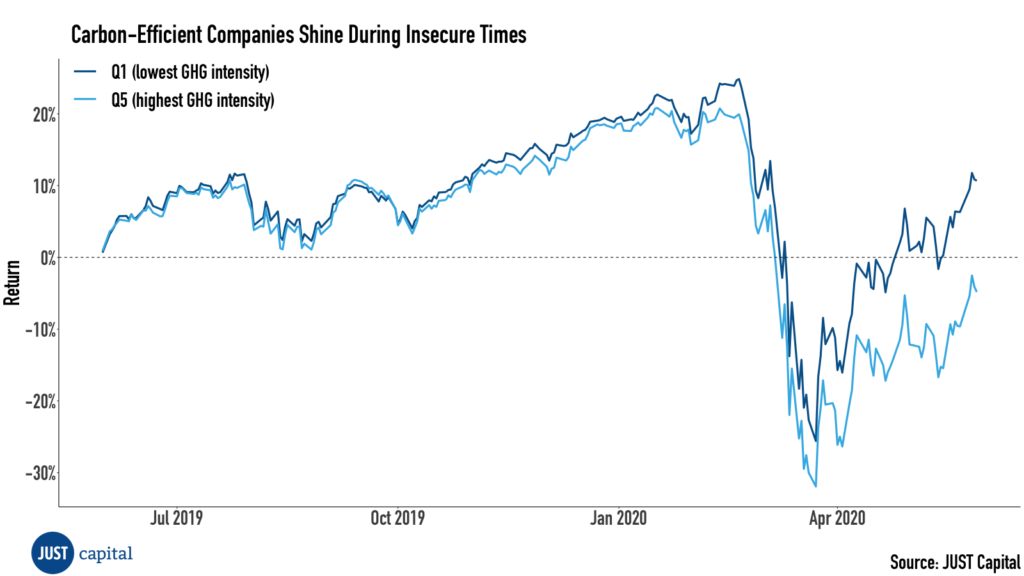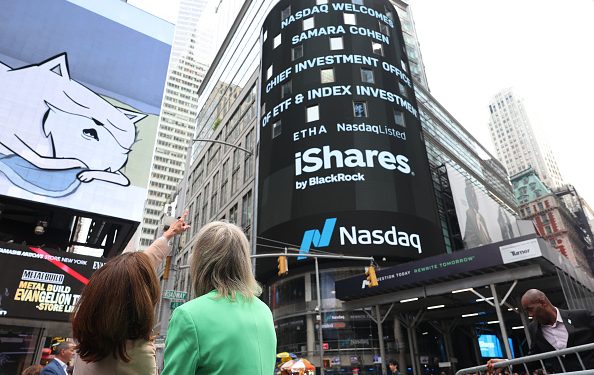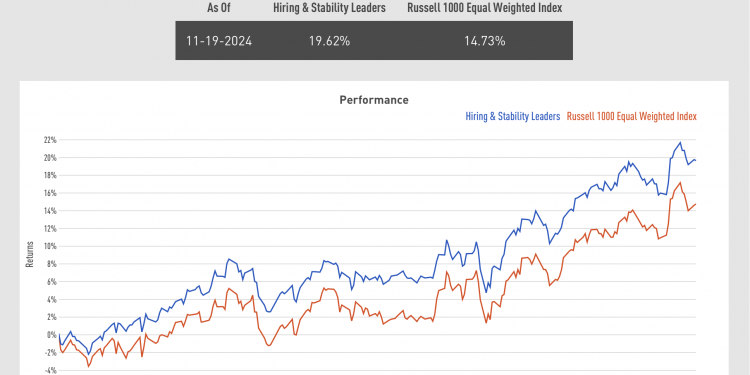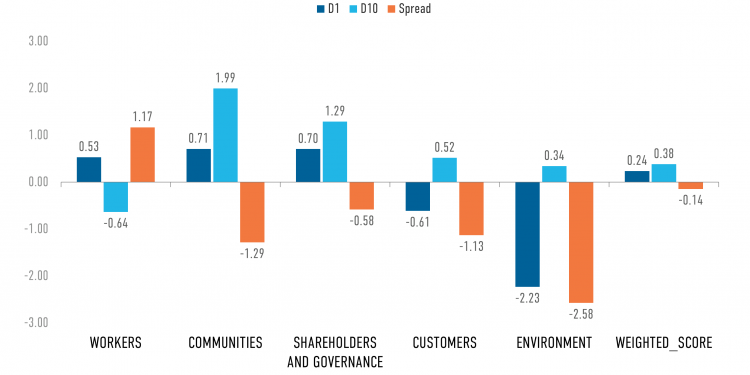Chart of the Week: Carbon-Efficient Companies Shine During Insecure Times
This week, we’re turning to the Environment stakeholder, which – despite heightened focus from business and investment leaders at the start of this year that’s also confirmed by our polling – has taken a backseat to the urgencies of pandemic, economic recession, and racial reckoning. But climate change remains a critical issue that needs our nation’s attention, and intersects distinctly with both the impacts of pandemic and systemic racism.
Climate change must remain part of the conversation. Earlier this week, First Street Foundation published critical new analysis showing flood risk data for more than 142 million homes and properties across the U.S., and found that over 10% of these properties face substantial risk of flooding, and even more should sea levels continue to rise as a result of climate change. While this demonstrates the potential costs of climate change, companies might be reluctant to reduce their carbon emissions, citing the costs of doing so. In our latest Chart of the Week, we show that a lower carbon footprint can actually be beneficial for a company’s bottom line.
To run this analysis, we looked at the GHG intensity – the amount of GHG emissions per dollar of revenue – of our ranked companies relative to their respective industries. When comparing the performance of the top quintile to the bottom quintile we find an outperformance of 15.5% over the last year. While the top quintile saw a 10.7.% return, the bottom quintile is down by 4.8%.

The result is a classic win-win: Companies emitting fewer greenhouse gases gain more in value. One possible explanation for this might be that a reduction in greenhouse gas emissions comes with lower energy costs. There is also the avoidance of stranded assets and potential regulatory costs like a carbon tax.
What this means is that climate change does not have to be a collective action problem. There is direct value for companies in mitigating climate change by reducing their greenhouse gas emissions, irrespective of the actions of their competitors. Reduced societal costs, such as limiting flooding, are the result.
In previous Charts of the Week, we looked at aspects of corporate governance and social responsibility and how both improve the bottom line for companies and investors. In light of these results, we maintain our strong belief that there is sufficient evidence for ESG factors being material to the investing process as a risk management tool. That’s why the proposed rule of the Department of Labor on the use of ESG vehicles in ERISA plans seems outdated already and nothing more than a form of appeasement to people insisting on the idea of shareholder primacy.
At JUST, we’re going to continue analyzing the ways companies are prioritizing stakeholder capitalism, and our research has shown that the E, the S, and the G all have their role to play in fostering long-term business health.
If you are interested in supporting our mission, we are happy to discuss data needs, index licensing, and other ways we can partner. Please reach out to our Director of Business Development, Charlie Mahoney, at cmahoney@justcapital.com to discuss how we can create a more JUST economy together.
If you have questions concerning the underlying analysis, please reach out to our Senior Manager for Quantitative Research, Steffen Bixby, PhD, at sbixby@justcapital.com.






